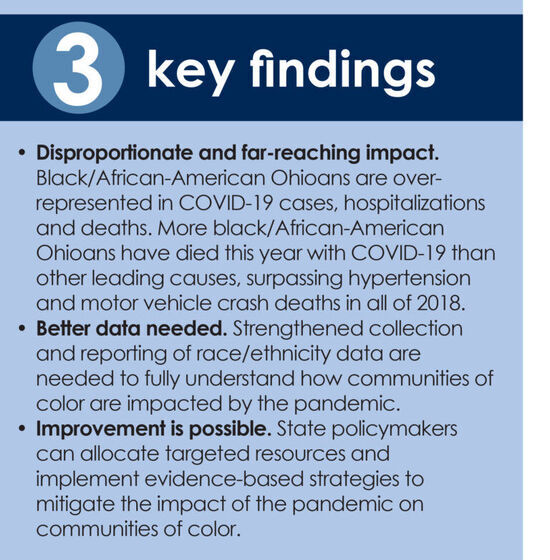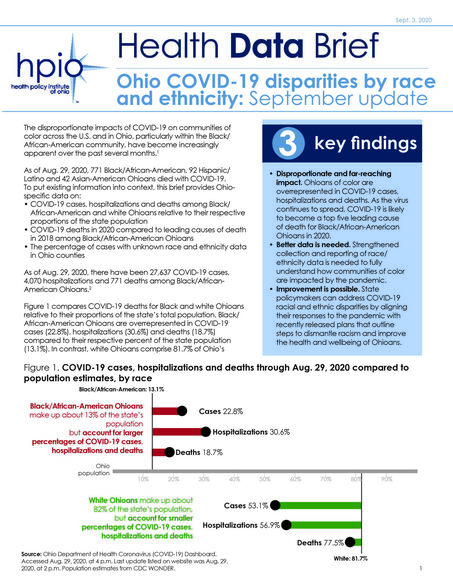Ohio COVID-19 disparities by race
The U.S. Centers for Disease Control and Prevention reports that COVID-19 is disproportionately impacting communities of color in the U.S.
As of May 16, 2020, 265 black/African-American, 23 Hispanic/Latino and 11 Asian-American Ohioans died with COVID-19. Information on the extent to which COVID-19 is impacting communities of color is limited, particularly for groups with smaller population sizes such as Hispanic/Latino and Asian-American Ohioans. However, current data suggests that the impact of COVID-19 on black/African-American Ohioans is far-reaching. This brief provides data on:
- COVID-19 cases, hospitalizations and deaths among black/African-American and white Ohioans relative to their proportions of the state population
- All-cause mortality in 2018 (most recently-available year) compared to COVID-19 mortality in 2020 among black/African-American Ohioans
- COVID-19 deaths in 2020 compared to leading causes of death in 2018 among black/African-American Ohioans

From data to action
State policymakers can allocate targeted resources and implement evidence-based strategies to mitigate the impact of the pandemic on communities of color by:
- Reporting comprehensive race/ethnicity data, such as data on COVID-19 cases, hospitalizations and deaths disaggregated by race, ethnicity, age and county/census tract, and reporting of age-adjusted death rates by race and ethnicity. Richer data is necessary to understand the full extent of racial and ethnic disparities related to COVID-19.
- Funding public health and healthcare workforce cultural competency training to ensure compliance with National Standards for Culturally and Linguistically Appropriate Services (CLAS) in Health and Health Care.
- Ensuring proportional representation of communities of color in the public health and healthcare workforce, including contact tracers and other surveillance workers.
- Targeting and tailoring public health resources for communities of color, including testing kits, awareness campaigns and other educational materials.
- Implementing State Health Improvement Planstrategies that have evidence of decreasing disparities and inequities, as well as taking action to address and eliminate racism and other forms of discrimination.
Because of current data availability, this brief focuses on race. Comprehensive data collection and reporting is critical to understanding the extent of the pandemic’s impact on other at-risk communities in Ohio, such as people with low incomes, with disabilities, living in rural or Appalachian regions of the state and immigrants/refugees.
See also HPIO’s first COVID-19 data brief, “Ohio COVID-19 Deaths Compared to Other Causes of Death.”

